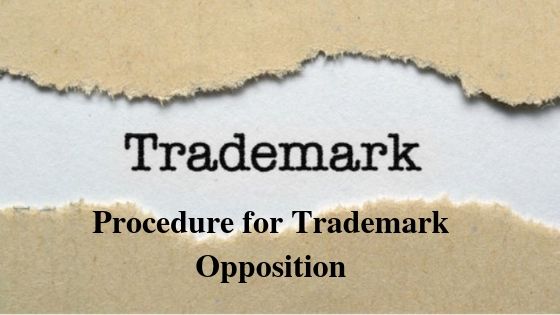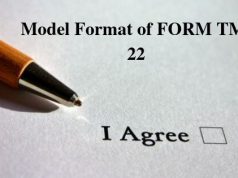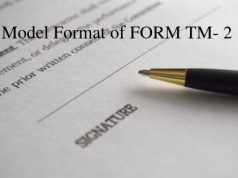What is Trademark opposition?
The trade mark status in the Indian Trade Mark Registry is said to be “Opposed” when such opposition has been filed by a third party (“opponent”). A third party usually files an opposition when there is a similar trademark published in the Journal or if the trade mark is alleged to be non-distinctive. The notice of opposition is served on the applicant which sets out the grounds on which the opponent has based his opposition. It is imperative that a counter statement is filed by the applicant within 2 months from the date of receipt of notice of opposition, failing which it will be considered that the applicant is not interested in contesting the opposition. Accordingly, the trademark application will be abandoned if no such counter statement is received by the Registry within the stipulated period. It is important to note that no extension of time is granted for filing the counter statement.The opposition is raised when the trademark application is published in Trademark Journal after acceptance by the Registry. The notice of opposition is filed within 4 months from the date of publication. The opposition is filed in the form prescribed by payment of requisite fee. This can be filed by owner of registered trademark or unregistered brand name.
Among other things, the notice of the opposition should contain particulars such as
- The impugned application number
- The name of the applicant of the trademark sought to be opposed indication of goods or services from the impugned trademark application
- Details of earlier mark or the earlier right on which the opposition is based
- Application or registration number and filing date
- Name and address of the proprietor and an indication of such earlier mark or right
- Grounds on which the opposition is based
Basic grounds for opposing a trade mark may be as under:
- The trade mark is similar or deceptively similar to the trade mark of the Opponent;
- The trade mark is similar or identical to the registered trade mark or pending trade mark of the Opponent, and is for similar or allied and cognate, goods or services;
- The trade mark is generic and descriptive in nature;
- The resemblance of the trade mark to the well-known trade mark of the Opponent.
- The Applicant has filed the trade mark application malafidely or with bad faith;
- The Applicant is not the actual owner of the trade mark; and
- The registration of trade mark is likely to deceive the public or cause confusion.
What happen after opposition is filed?
The following stages are involved in the Trademark Opposition procedure:
Notice of Opposition: Any person can file a notice of opposition on a trademark that is advertised in the trademark journal within 4 months from the date of advertisement.
- What is in a Notice of Opposition?
The Notice of Opposition sets out (usually in numbered paragraphs) identifying information about the opposer including its allegations for standing and grounds for opposition.
- What is in an Answer to a Notice of Opposition?
In its answer the applicant is required to admit or deny the allegations in the Notice of Opposition. The applicant can also assert affirmative defenses. Affirmative defenses may include unclean hands, laches, estoppel, acquiescence, fraud, mistake, prior registration defense, prior judgment, or any other matter constituting an avoidance or affirmative defense.
Counter Statement: Within 2 months of the receipt of the notice of opposition, the Applicant can file a counter statement. If the Counter Statement is not filed within 2 months, the Applicant is deemed to have abandoned the Trademark application.
Evidence in Support of Opposition: If the Applicant files the Counter-Statement, within 2 months (extendable by one month) of the receipt of the counter-statement the Opponent must file evidence, by way of an Affidavit. The Opponent also has an option to write to the Registrar stating that he does not desire to file evidence but instead intends to rely on the facts stated in the Notice of Opposition.
Evidence in Support of Application: Upon receipt of the evidence of the Opponent, even the Applicant is provided with 2 months (extendable by 1 month) for filing Evidence in Support of Application, if any.
Evidence in reply: Additionally the Opponent is given 1 month (extendable by 1 month) to file Evidence in response to the Applicant’s evidence.
Hearing: Based on the notice of opposition, counter statement, and evidence filed, the Registrar shall call for a hearing. Within fourteen days of receipt of the notice of hearing, the parties are required to notify the Registrar of their intention to appear in the matter. Finally, the matter is heard by the Registrar and decided upon merits.
Registration or rejection: If the registrar decides in favour of the applicant, the trademark will be registered and registration certificate will be issued. If the registrar decides in favour of the opponent, then the trademark application shall be rejected.
Thus the trademark opposition is an effective remedy available to the registered proprietor/ prior user of a trademark. All that the registered proprietor/ prior user is required to do is to be vigilant on trademark watch and initiate an appropriate proceeding at the right time.
Get Drafted Trademark Objection reply from our Experts and secure your Trademark, click here
OUR SERVICES
Company Registration I Trademark I Copyright I Patent I GST I MSME
ISO Certification I Website/App Policy I Legal Documentation
Annual Compliance I Connect Consultant
Visit: Aapka Consultant to get Online Services of CA CS & Lawyers












